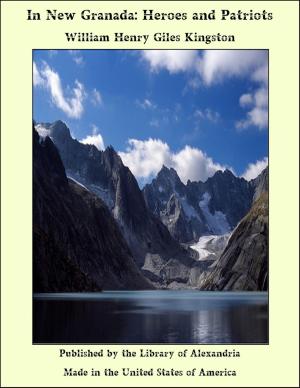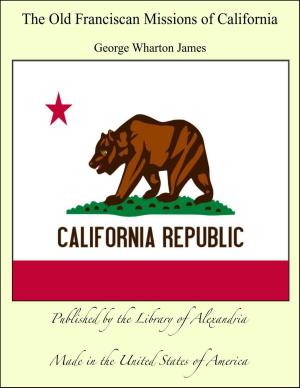In the Wilds of South America: Six Years of Exploration in Colombia, Venezuela, British Guiana, Peru, Bolivia, Argentina, Paraguay, and Brazil
Nonfiction, Religion & Spirituality, New Age, History, Fiction & Literature| Author: | Leo Edward Miller | ISBN: | 9781465627834 |
| Publisher: | Library of Alexandria | Publication: | March 8, 2015 |
| Imprint: | Language: | English |
| Author: | Leo Edward Miller |
| ISBN: | 9781465627834 |
| Publisher: | Library of Alexandria |
| Publication: | March 8, 2015 |
| Imprint: | |
| Language: | English |
The voyage from Panama to Buenaventura, the more northern of Colombia’s two Pacific seaports, requires but two days’ time. Owing to numerous reefs and rocks that render navigation perilous along the coast of northwestern South America, it is necessary for ships to sail far out into the Pacific. Banks of low-hanging fog, encountered at frequent intervals, add further to the skipper’s difficulties. The captain of the Quito followed a simple plan for finding port. It was his custom to steam in a southerly direction about forty-eight hours, and then head toward the coast. Once in sight of land, there was little difficulty in getting his bearings, although it frequently meant steaming back a distance of ten or fifteen miles. At noon on the second day out we entered what might be called the belt of perpetual rain, and for three hours water fell in such torrents that it seemed a solid wall. When the deluge had ceased and the last wisps of blue-gray vapor melted into oblivion, the shore-line, dim and distant, could be discerned. The faint outline of a rugged coast became gradually sharper; jagged rocks, frowning precipices, and dark, gloomy forests slowly unfolded themselves to the vision. The magnitude of it all was most impressive. Then followed a ten-mile sail through the placid water of Buenaventura Bay. Numberless brown pelicans fished in the shallows while others, in long files, alternately sailed and flapped through the air on their way to some isolated nook among the mangroves. The dark, hazy shore-line at the head of the bay gradually dissolved itself into lines of graceful cocoanut-palms and low, thatched huts flanked by a seemingly endless mantle of green. Huge dugout canoes made from logs of great size swarmed out from the water’s edge, their dusky paddlers vying with one another in their efforts to be the first to reach the steamer; then the men quarrelled violently among themselves, and also shouted to the persons on the deck, soliciting luggage to take ashore. Before long, trunks were being lowered into some of these wallowing craft while passengers embarked in others, and the paddle of a mile to shore began. Unfortunately the tide was ebbing, leaving extensive mud-flats exposed along the water-front. As there was no pier it was necessary for the canoemen to carry on their backs the human freight as well as trunks and other luggage through a wide belt of mud and sand. Our party consisted of Doctor Frank M. Chapman, curator of birds, of the American Museum, Louis Agassiz Fuertes, and myself. At Buenaventura we were joined by William Richardson, who had spent many years as a field-naturalist in Central and South American countries. We were starting on a zoological expedition—a quest for birds and mammals, and also to study the country, life-zones, problems of distribution and many other things inseparable from a biological survey such as we proposed to make. The original plans of the expedition called for a rather short stay; but for me, at least, the experience was destined to cover a period of eighteen months and take me to some of the most remote and wildest portions of the country. Viewed from the water, Buenaventura appears most unattractive. The row of squat, makeshift huts, built on tall poles, extends far beyond the line of high water; as the tide rises the water swishes and gurgles underneath the houses and the occupants travel about in canoes. Farther from the shore the ground is high and the town is more interesting, though not inviting. The place bears an unenviable reputation. On account of the superabundant rainfall and hot climate, fevers and other life-sapping diseases are rife and few foreigners can withstand the ordeal of a lengthy residence there. This notoriety had reached our ears long before we embarked on the journey; it was, therefore, with a feeling of relief that we learned of the departure of a train for the interior early the next morning.
The voyage from Panama to Buenaventura, the more northern of Colombia’s two Pacific seaports, requires but two days’ time. Owing to numerous reefs and rocks that render navigation perilous along the coast of northwestern South America, it is necessary for ships to sail far out into the Pacific. Banks of low-hanging fog, encountered at frequent intervals, add further to the skipper’s difficulties. The captain of the Quito followed a simple plan for finding port. It was his custom to steam in a southerly direction about forty-eight hours, and then head toward the coast. Once in sight of land, there was little difficulty in getting his bearings, although it frequently meant steaming back a distance of ten or fifteen miles. At noon on the second day out we entered what might be called the belt of perpetual rain, and for three hours water fell in such torrents that it seemed a solid wall. When the deluge had ceased and the last wisps of blue-gray vapor melted into oblivion, the shore-line, dim and distant, could be discerned. The faint outline of a rugged coast became gradually sharper; jagged rocks, frowning precipices, and dark, gloomy forests slowly unfolded themselves to the vision. The magnitude of it all was most impressive. Then followed a ten-mile sail through the placid water of Buenaventura Bay. Numberless brown pelicans fished in the shallows while others, in long files, alternately sailed and flapped through the air on their way to some isolated nook among the mangroves. The dark, hazy shore-line at the head of the bay gradually dissolved itself into lines of graceful cocoanut-palms and low, thatched huts flanked by a seemingly endless mantle of green. Huge dugout canoes made from logs of great size swarmed out from the water’s edge, their dusky paddlers vying with one another in their efforts to be the first to reach the steamer; then the men quarrelled violently among themselves, and also shouted to the persons on the deck, soliciting luggage to take ashore. Before long, trunks were being lowered into some of these wallowing craft while passengers embarked in others, and the paddle of a mile to shore began. Unfortunately the tide was ebbing, leaving extensive mud-flats exposed along the water-front. As there was no pier it was necessary for the canoemen to carry on their backs the human freight as well as trunks and other luggage through a wide belt of mud and sand. Our party consisted of Doctor Frank M. Chapman, curator of birds, of the American Museum, Louis Agassiz Fuertes, and myself. At Buenaventura we were joined by William Richardson, who had spent many years as a field-naturalist in Central and South American countries. We were starting on a zoological expedition—a quest for birds and mammals, and also to study the country, life-zones, problems of distribution and many other things inseparable from a biological survey such as we proposed to make. The original plans of the expedition called for a rather short stay; but for me, at least, the experience was destined to cover a period of eighteen months and take me to some of the most remote and wildest portions of the country. Viewed from the water, Buenaventura appears most unattractive. The row of squat, makeshift huts, built on tall poles, extends far beyond the line of high water; as the tide rises the water swishes and gurgles underneath the houses and the occupants travel about in canoes. Farther from the shore the ground is high and the town is more interesting, though not inviting. The place bears an unenviable reputation. On account of the superabundant rainfall and hot climate, fevers and other life-sapping diseases are rife and few foreigners can withstand the ordeal of a lengthy residence there. This notoriety had reached our ears long before we embarked on the journey; it was, therefore, with a feeling of relief that we learned of the departure of a train for the interior early the next morning.















